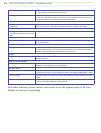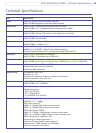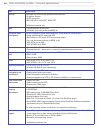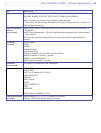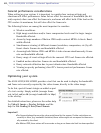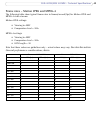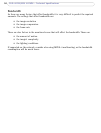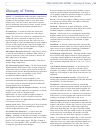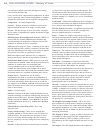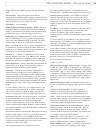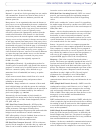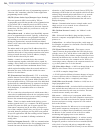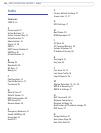
56
AXIS 207W/AXIS 207MW - Glossary of Terms
are created and used with a set of programming requests or
"function calls" sometimes called the sockets application
programming interface (API).
SSL/TSL (Secure Socket Layer/Transport Layer Security)
These two protocols (SSL is succeeded by TSL) are
cryptographic protocols that provide secure communication
on a network. SSL is commonly used over HTTP to form
HTTPS, as used e.g. on the Internet for electronic financial
transactions. SSL uses public key certificates to verify the
identity of the server.
Subnet/subnet mask - A subnet is an identifiably separate
part of an organization's network. Typically, a subnet may
represent all the machines at one geographic location, in
one building, or on the same local area network (LAN).
Having an organization's network divided into subnets
allows it to be connected to the Internet with a single shared
network address.
The subnet mask is the part of the IP address that tells a
network router how to find the subnet that the data packet
should be delivered to. Using a subnet mask saves the router
having to handle the entire 32-bit IP address; it simply
looks at the bits selected by the mask.
Switch - A switch is a network device that connects
network segments together, and which selects a path for
sending a unit of data to its next destination. In general, a
switch is a simpler and faster mechanism than a router,
which requires knowledge about the network and how to
determine the route. Some switches include the router
function. See also Router.
TCP (Transmission Control Protocol) - TCP is used along
with the Internet Protocol (IP) to transmit data as packets
between computers over the network. While IP takes care of
the actual packet delivery, TCP keeps track of the individual
packets that the communication (e.g. requested a web page
file) is divided into, and, when all packets have arrived at
their destination, it reassembles them to re-form the
complete file.
TCP is a connection-oriented protocol, which means that a
connection is established between the two end-points and is
maintained until the data has been successfully exchanged
between the communicating applications.
Telnet - Telnet is a simple method with which to access
another network device, e.g. a computer. The HTTP protocol
and the FTP protocols allow you to request specific files
from remote computers, but do not allow you logon as a
user of that computer. With Telnet, you log on as a regular
user with whatever privileges you may have been granted
for specific applications and data residing on that computer.
TVL (TV Lines) - A method of defining resolutions in
analog video.
UDP (User Datagram Protocol) - UDP is a communications
protocol that offers limited service for exchanging data in a
network that uses the Internet Protocol (IP). UDP is an
alternative to the Transmission Control Protocol (TCP). The
advantage of UDP is that it is not required to deliver all data
and may drop network packets when there is e.g. network
congestion. This is suitable for live video, as there is no
point in re-transmitting old information that will not be
displayed anyway.
Unicast - Communication between a single sender and a
single receiver over a network. A new connection is
established for each new user.
URL (Uniform Resource Locator) - An "address" on the
network.
USB - (Universal Serial Bus) A plug-and-play interface
between a computer and peripheral devices, e.g. scanners,
printers, etc.
Varifocal lens - A varifocal lens provides a wide range of
focal lengths, as opposed to a lens with a fixed focal length,
which only provides one.
VPN (Virtual Private Network) - This creates a secure
"tunnel" between the points within the VPN. Only devices
with the correct "key" will be able to work within the VPN.
The VPN network can be within a company LAN (Local Area
Network), but different sites can also be connected over the
Internet in a secure way. One common use for VPN is for
connecting a remote computer to the corporate network, via
e.g. a direct phone line or via the Internet.
VOP (Video Object Plane) - A VOP is an image frame in an
MPEG-4 video stream. There are several types of VOP:
- An I-VOP is complete image frame.
- A P-VOP codes the differences between images, as long as
it is more efficient to do so. Otherwise it codes the whole
image, which may also be a completely new image.
WAN (Wide-Area-Network) - Similar to a LAN, but on a
larger geographical scale.
W-LAN (Wireless LAN) - A wireless LAN is a wireless local
area network that uses radio waves as its carrier: where the
network connections for end-users are wireless. The main
network structure usually uses cables.
Web server - A Web server is a program, which allows
Web browsers to retrieve files from computers connected to
the Internet. The Web server listens for requests from Web
browsers and upon receiving a request for a file sends it
back to the browser.
The primary function of a Web server is to serve pages to
other remote computers; consequently, it needs to be
installed on a computer that is permanently connected to
the Internet. It also controls access to the server whilst
monitoring and logging server access statistics.
WEP (Wireless Equivalent Privacy) - A wireless security
protocol, specified in the IEEE 802.11 standard, which is
designed to provide a wireless local area network (WLAN)
with a level of security and privacy comparable to that
usually expected of a wired LAN. Security is at two different



